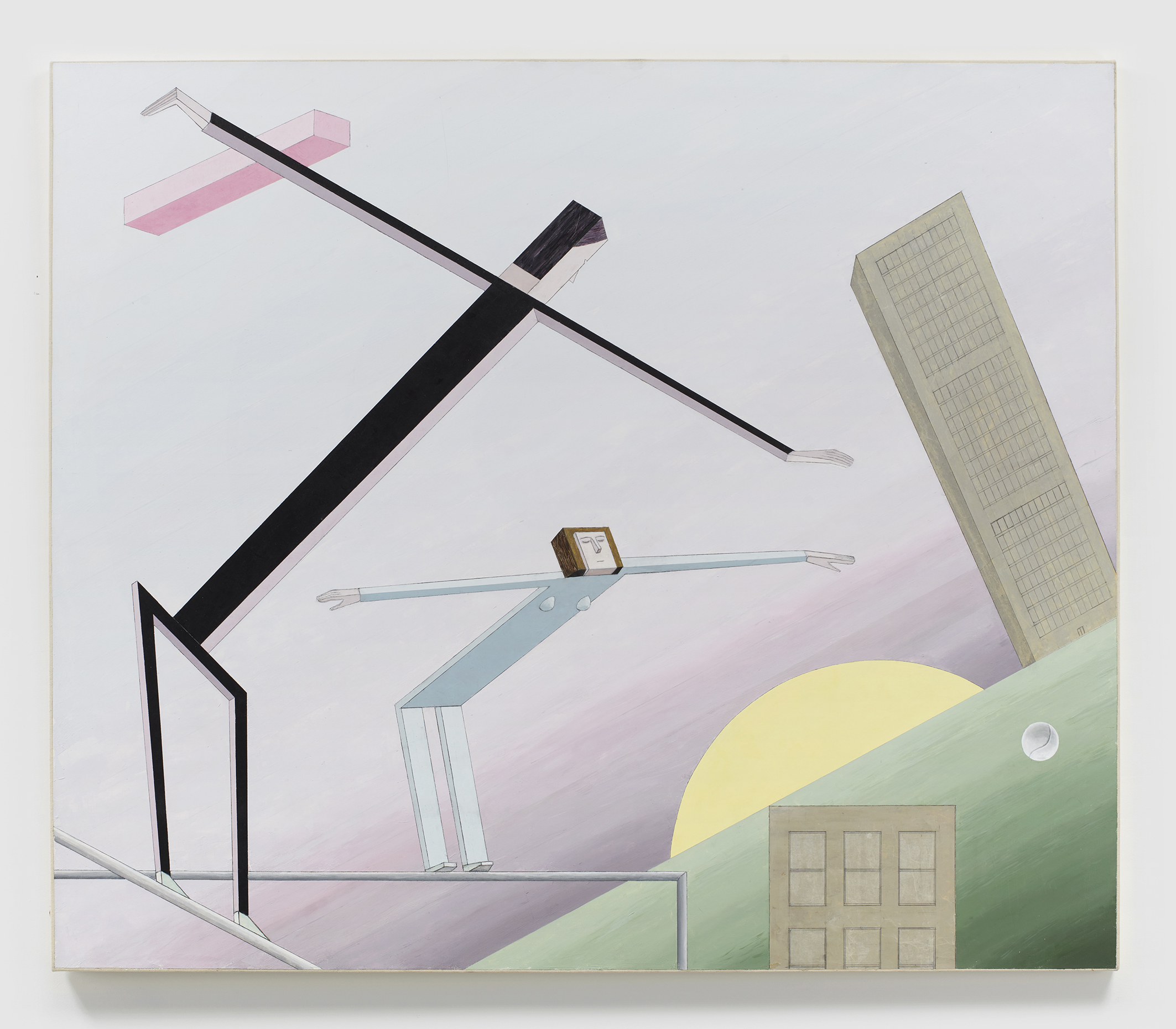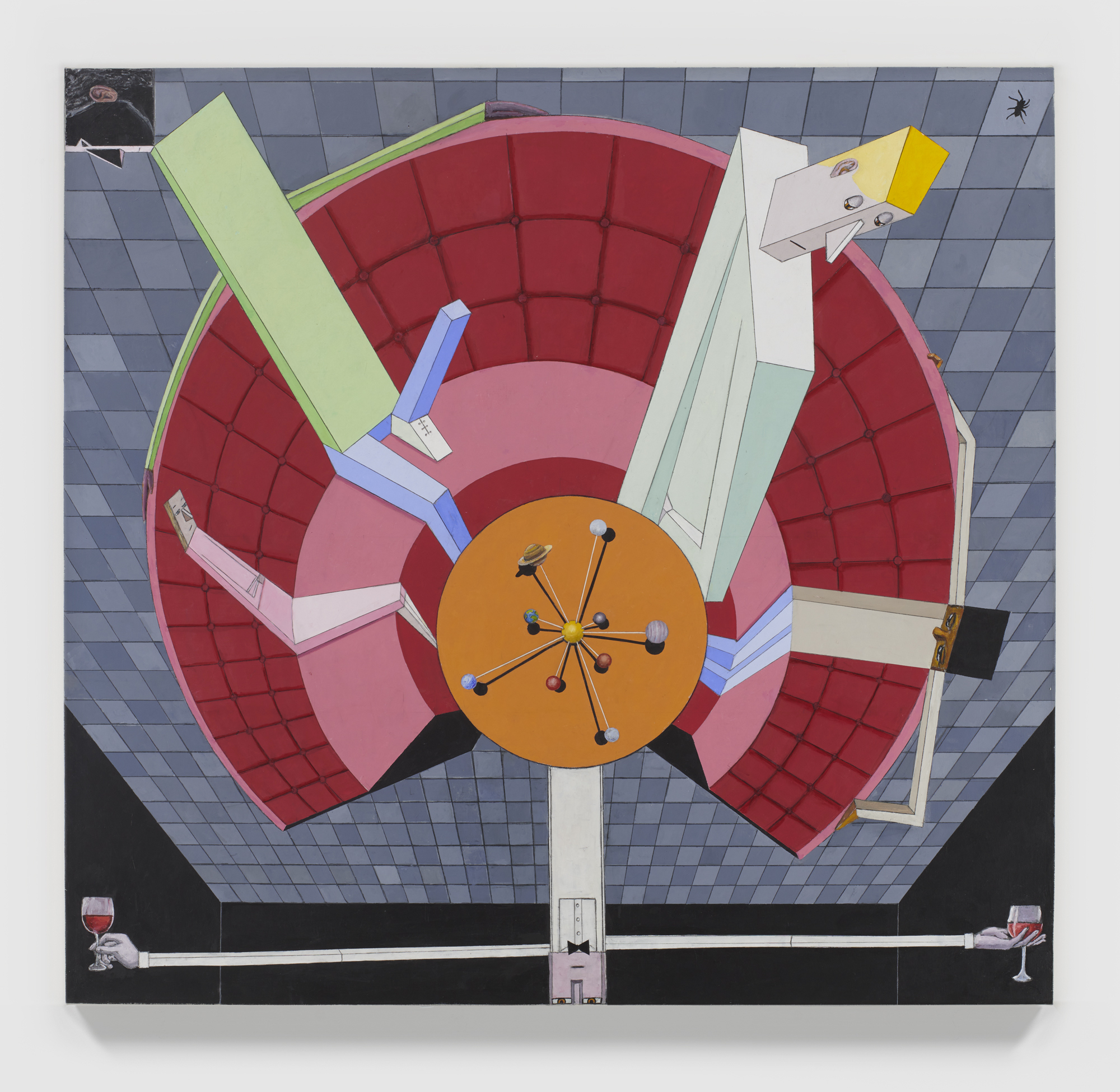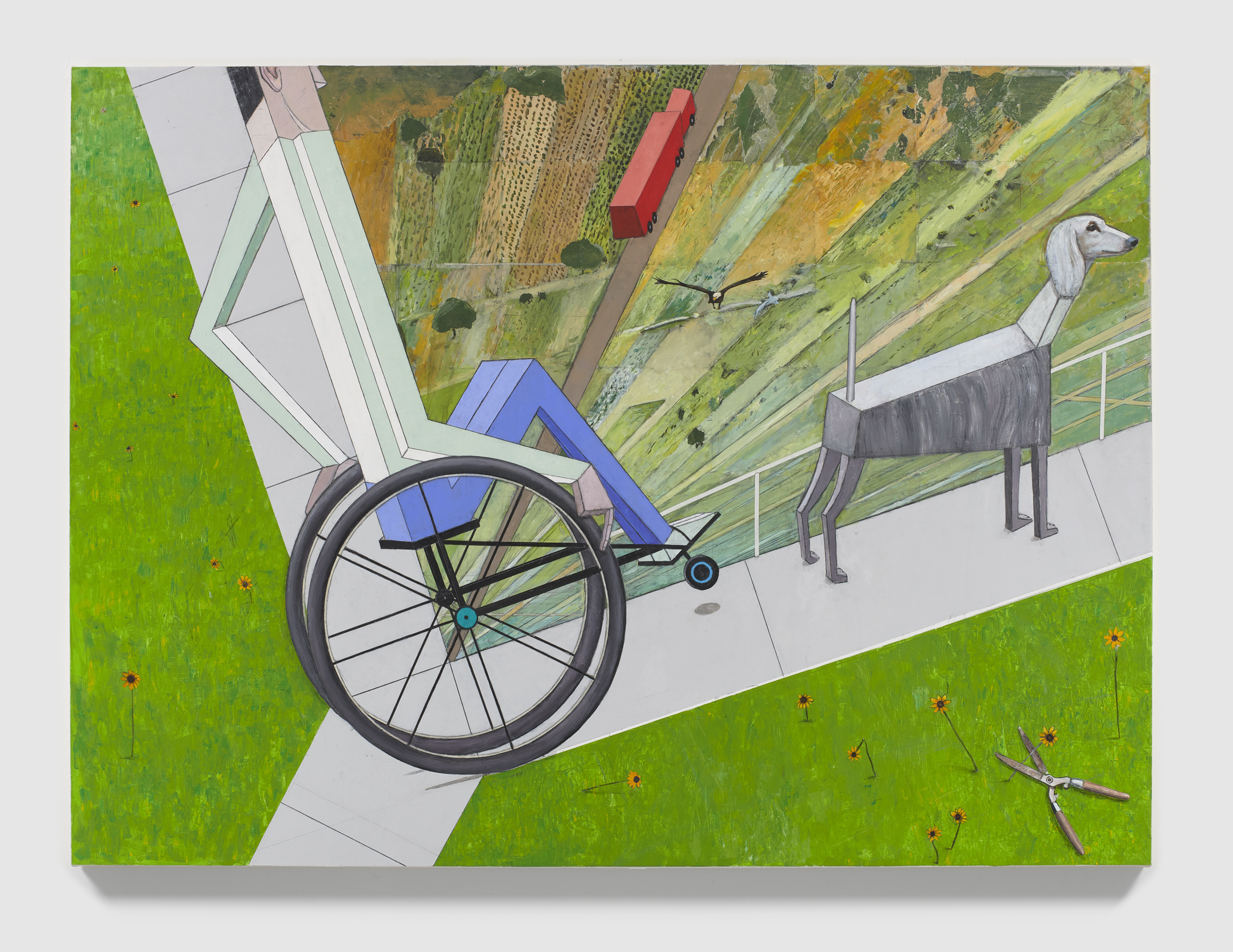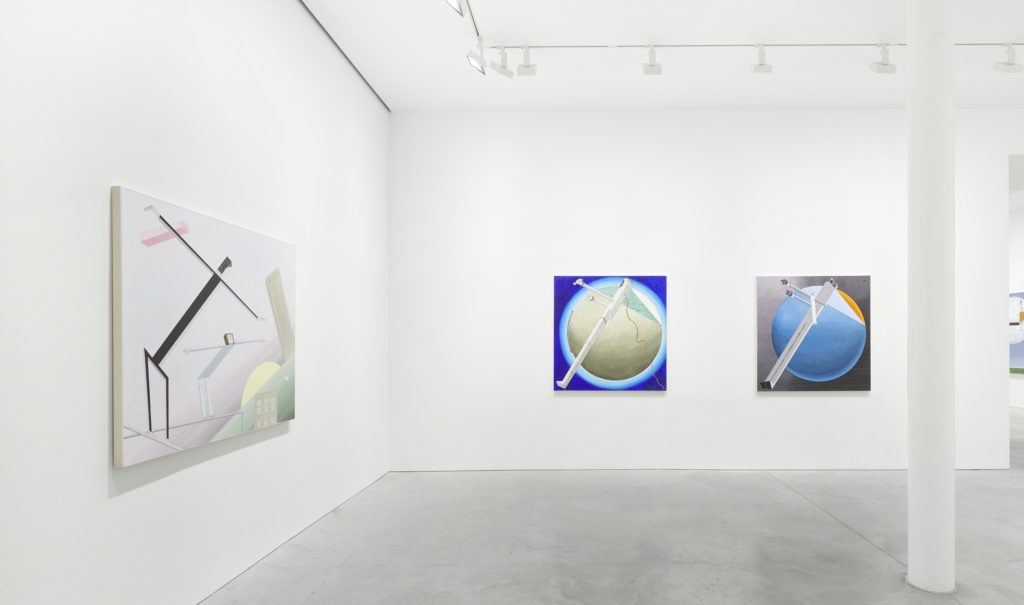Linear perspective is an unforgiving taskmaster. Anyone who has sat down with pencil and paper—a ruler and eraser are helpful, as well—in the attempt to create a legible illusion of dimension knows as much. The slightest error in connecting forms to a given vanishing point or, in the case of isometric perspective, set of axes will make for a clumsy picture. A giveaway of the amateur artist is, in fact, the floundering of perspectival logic—it’s there to see in the work of any number of Sunday painters or folk artists. A sure sign of an artist’s mastery is not only how consistently perspective is employed, but, conversely, how it can be distorted and still remain pictorially true. The Surrealist cityscapes of Giorgio de Chirico would be considerably less haunting were their desolate vistas rendered consistently; that we don’t mistake the liberties de Chirico took with perspective as bad drawing points to the level of his expertise. The same holds true for Max Beckmann and his veering meditations on history and culture, or, for that matter, the dorm-room fabulations of M. C. Escher. Mernet Larsen, a contemporary painter whose work is the subject of a splendid exhibition at James Cohan Gallery’s Walker Street space, can be added to this list.1
The reason? Because everything in a Larsen picture is wrong. Linear perspective is thrown under the bus and then reconfigured as origami. Torsion is the rule. Faraway vistas tilt and flatten. Objects occupying the same environment vary wildly in scale. Pictorial continuity shifts abruptly or is bent gradually—sometimes within the same picture. A distant planet veers close to earth’s orbit; a steam engine chugs along the earth’s periphery; Lilliputian figures gambol amid totemic giants. Cast shadows, when rendered, are furtive and independent. Larsen’s universe is infinitely negotiable and persistently variable. In their lack of a gravitational hub, the paintings touch on the hallucinogenic. Truth be told, their wibble-and-wobble can try the patience of the eye—and stomach. That our attention and equilibrium aren’t upset is testament to how thoroughly Larsen is in control of compositional vectors. Dislocated as they may be, the pictures hold tight. A line is trod between chaos and calm, rectitude and ping-pong. Incongruity is vital to Larsen’s vision, and she makes something of it.

What happens in Larsen’s work—the narratives that are distilled and codified—changes drastically from canvas to canvas. Mundane occurrences vie with extraordinary circumstance. An evening at a wine bar with friends or a baseball game alternate with religious assignations, interstellar travel, and, in Dawn (after El Lissitzky) (2012), a man and a woman teetering on gymnastic beams during a disruption in the space/time continuum as . . . a tennis match takes place off-stage? With the exception of a curvilinear penguin glimpsed in one tableau, the inhabitants of Larsen’s world are rendered as cubic forms, stacked and packed like building blocks. In an online video accompanying the exhibition, Larsen talks about the impact Pinocchio had on her as a child. (One feels safe in assuming that it wasn’t Walt Disney’s cuddly variation on the story but, rather, the nineteenth-century novel by Carlo Collodi.) Larsen has acknowledged an abiding debt to Bunraku, a form of puppet theater that originated in seventeenth-century Japan. A line could also be traced to twentieth-century precedents like Oskar Schlemmer, a painter and costume designer who imbued the mechanical with a stern brand of whimsy, and the futuristic marionettes of Hans Arp and Sophie Tauber.

The primary force guiding the paintings has already been hinted at. There’s not a canvas on display that doesn’t bear the parenthetical subtitle After Lissitzky. The pioneering Russian Constructivist is inescapable when taking in the work, but what Larsen does with his example is decidedly off-topic. El Lissitzky, you’ll remember, invented the “proun”—an arrangement of geometric shapes that laid a “path towards the construction of a new configuration which emerges from a ground fertilized by the corpses of pictures and their artists.” Portentous stuff, no? Larsen will have none of it. She divests El Lissitzky’s art of philosophical heavy-breathing and uses it as an imprimatur for wit, wonder, and—what was that again?—representation. Solar System, Explained (after El Lissitzky) (2020), the aforementioned wine bar diorama, is predicated on a Proun painted circa 1922, a radiating array of rectangles and triangles predicated on a centralized red circle. A hidebound Constructivist would count this kind of thing as anti-revolutionary. But precedent is best honored through appreciative disrespect. In stepping on El Lissitzky’s toes, Larsen signals her gratitude. Influence is like that.

Larsen employs acrylic and pencil, along with collage. Preliminary sketches on notebook paper lead to sizable works-on-canvas. After a dominant image is established, Larsen adheres cut-and-painted oddments of imagery rendered on tracing paper. The latter are added almost surreptitiously: as blunt as each picture might be in its construction, Larsen is committed to creating a sustainable and coherent world. (It helps that this imagined world is inherently fragmented.) Intersection (after El Lissitzky) (2020), with its aerial view of farmland, is a tour de force of verdant color and surface grit, and is proof of how seamless different media can be when mixed by an able hand. Larsen’s brushwork runs from rough-and-ready to smoothly gradated to unapologetically programmatic. All of which is put to the service of a dry and inventive strain of absurdism. Deliverance (after El Lissitzky) (2020)—with its monk, chicken, and zig-zag angel—updates Piero della Francesca courtesy the Lego corporation. What possibly can be made of Beach (after El Lissitzky) (2020), a painting whose intricate array of symbols beggar interpretation? Go figure: it’s an image weighted with unmistakable gravitas and specificity of purpose. “I just want to make good old-fashioned paintings of people and things”—in this self-stated ambition, Larsen has succeeded admirably and to oddball effect.

